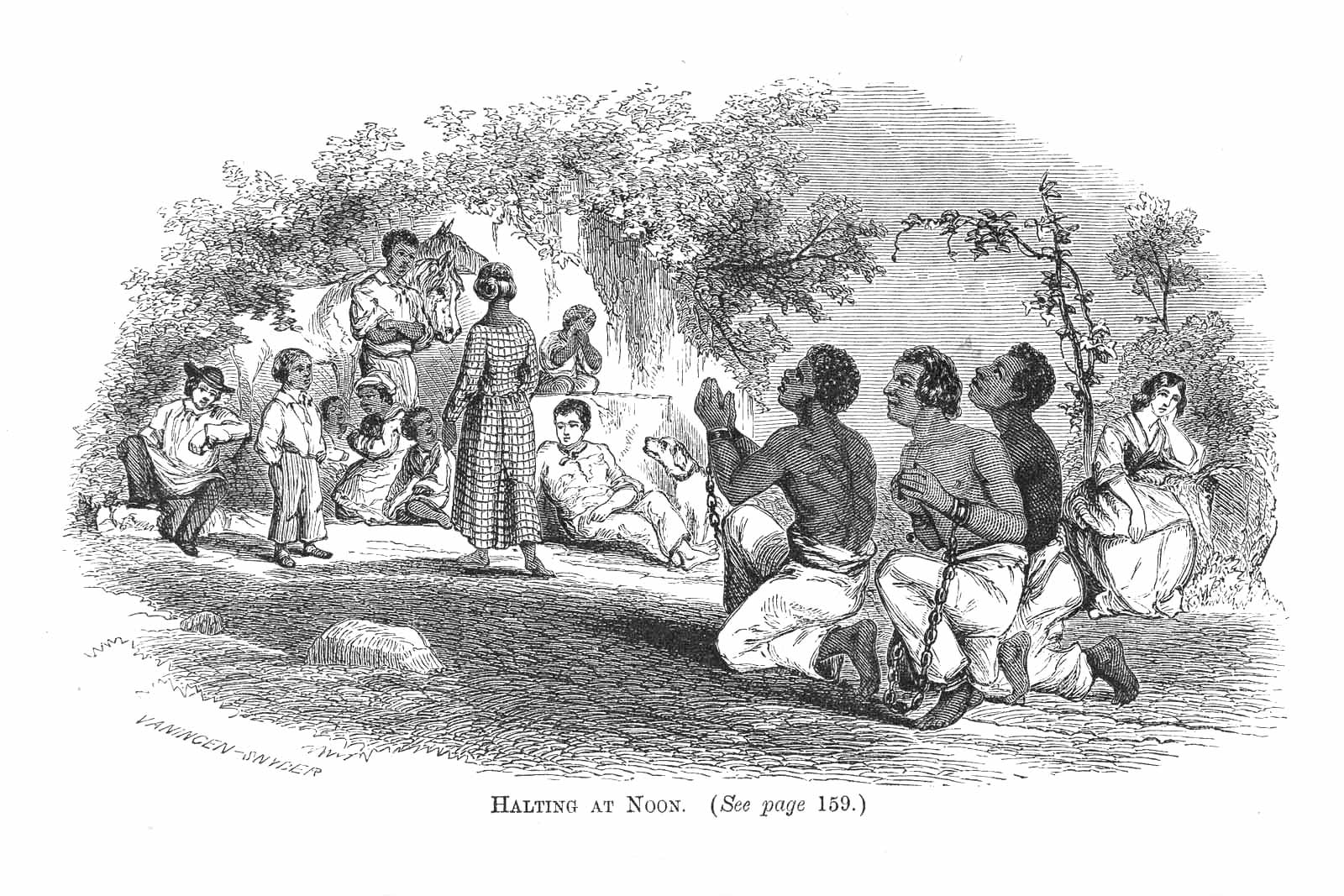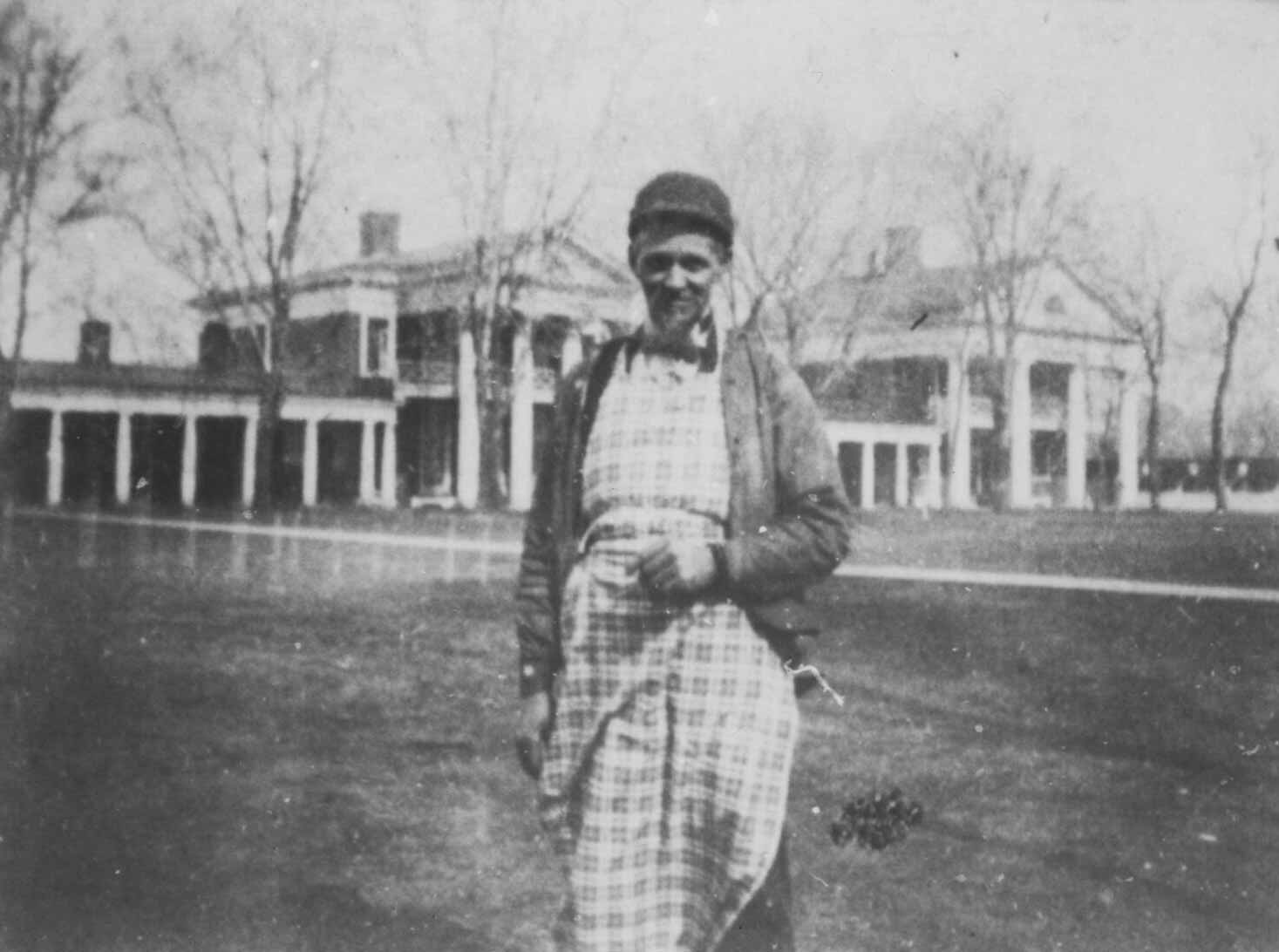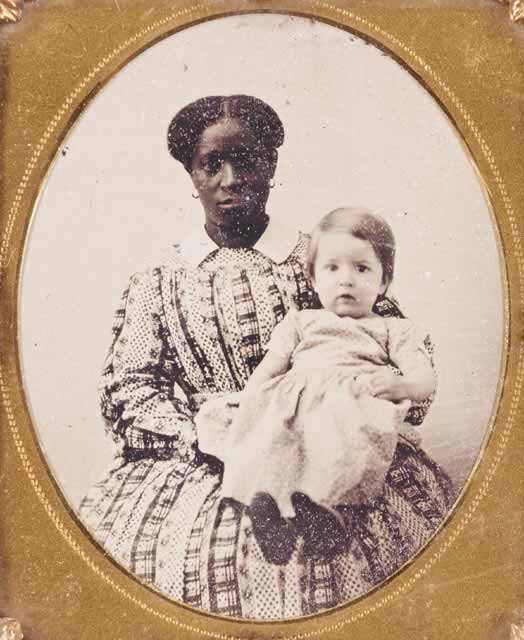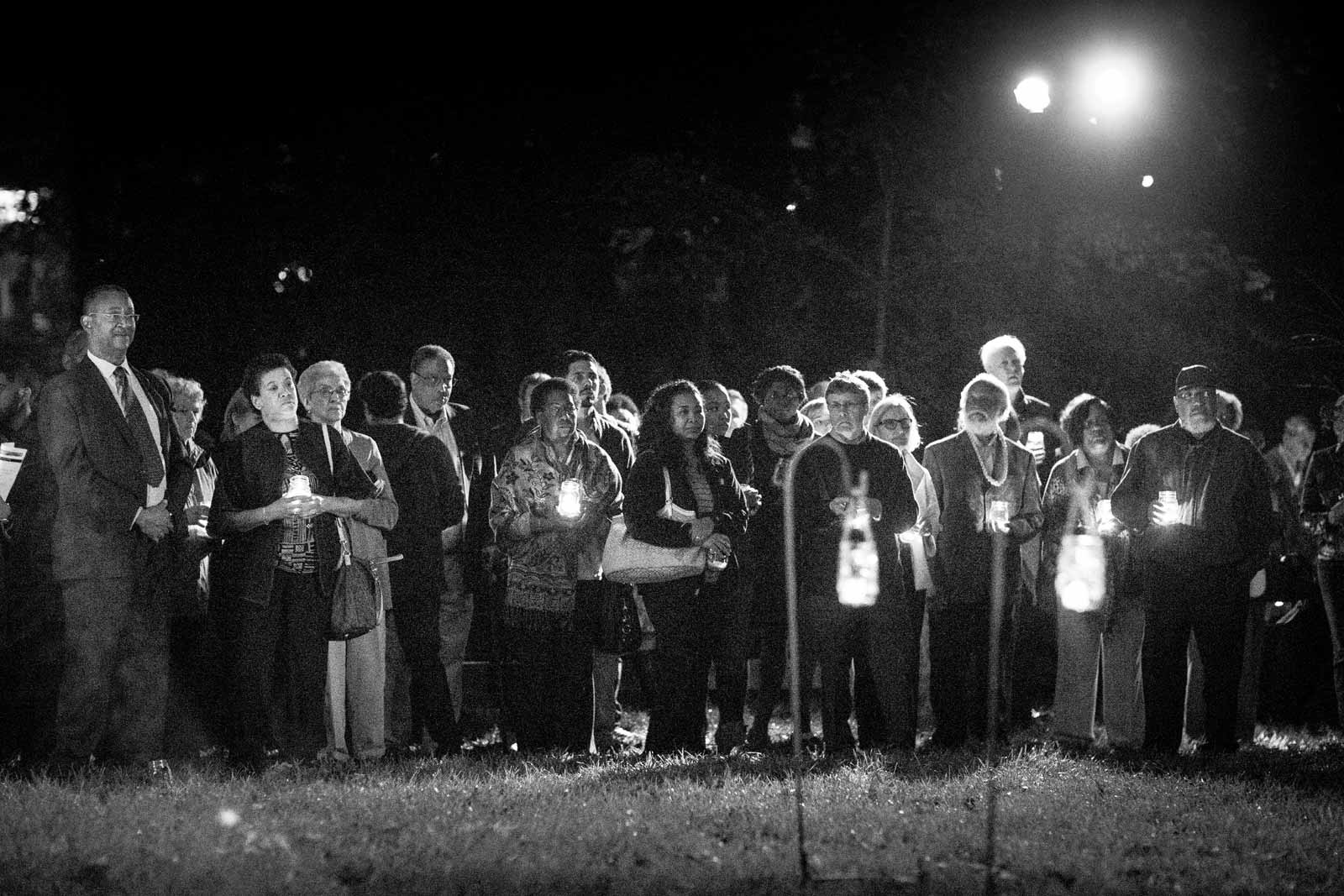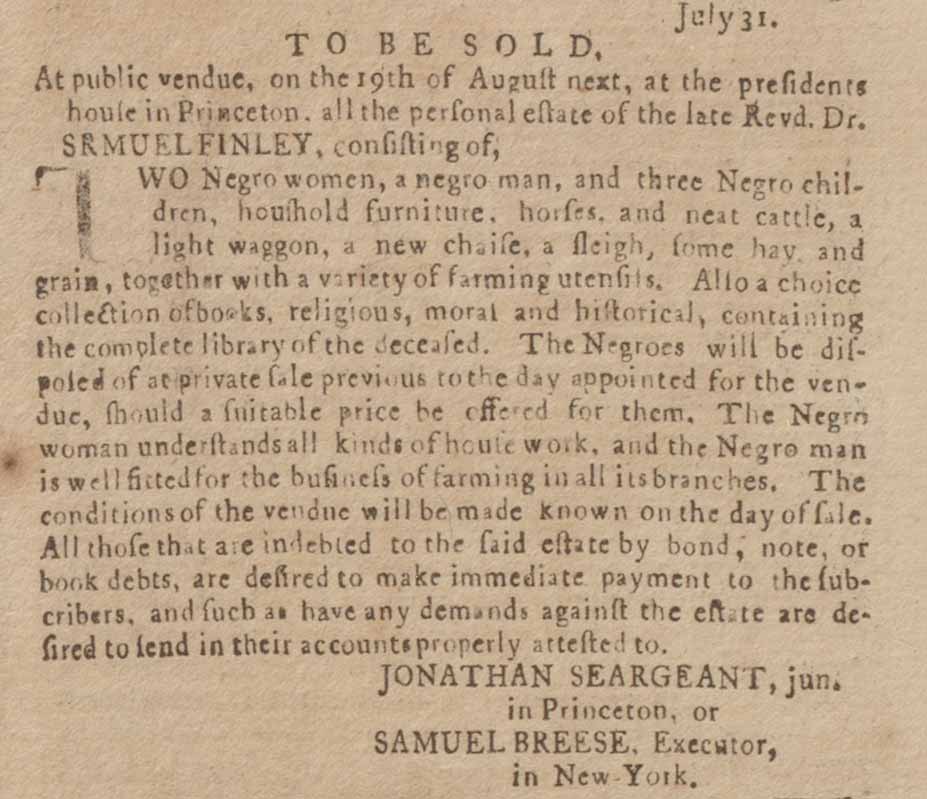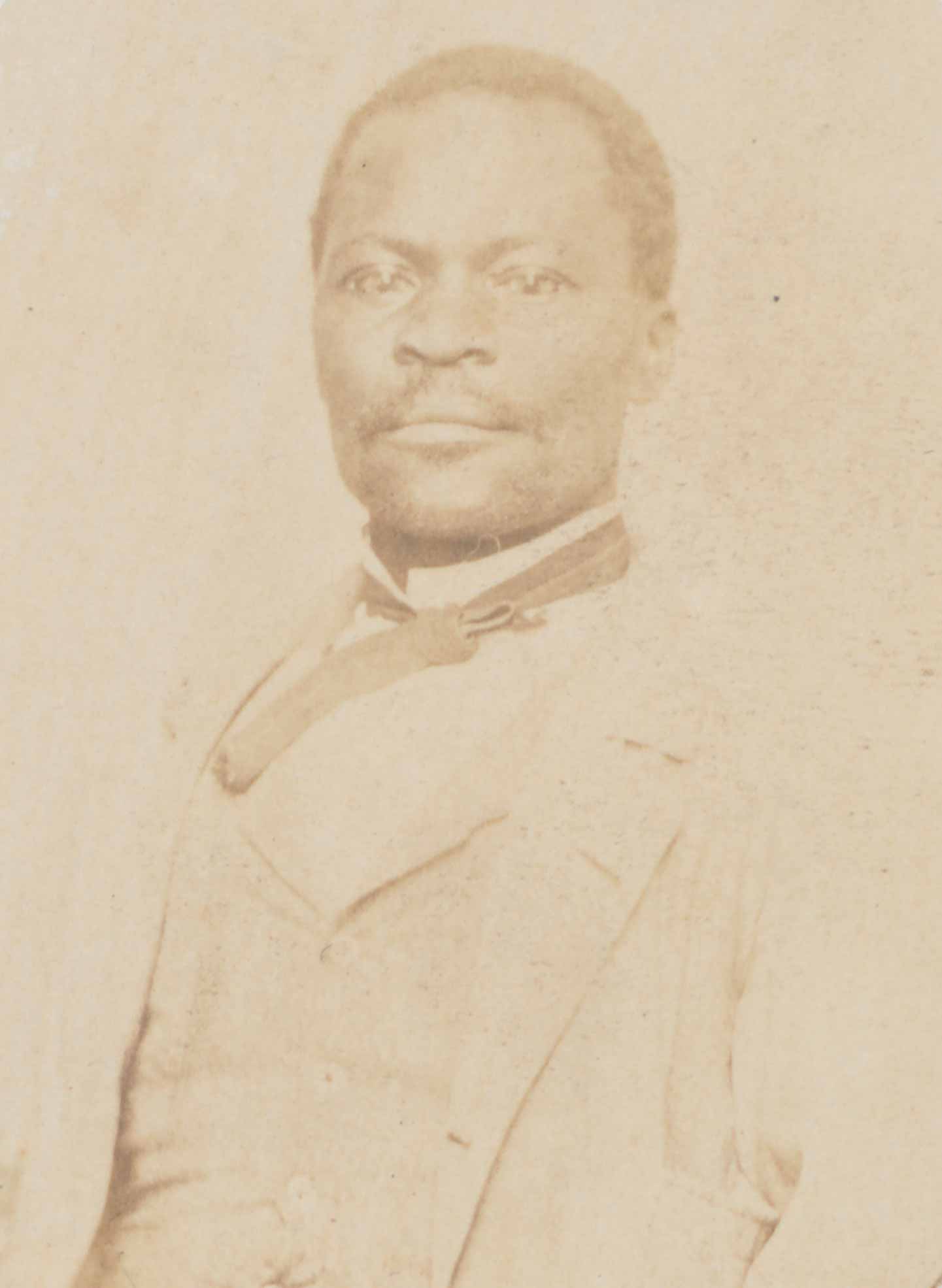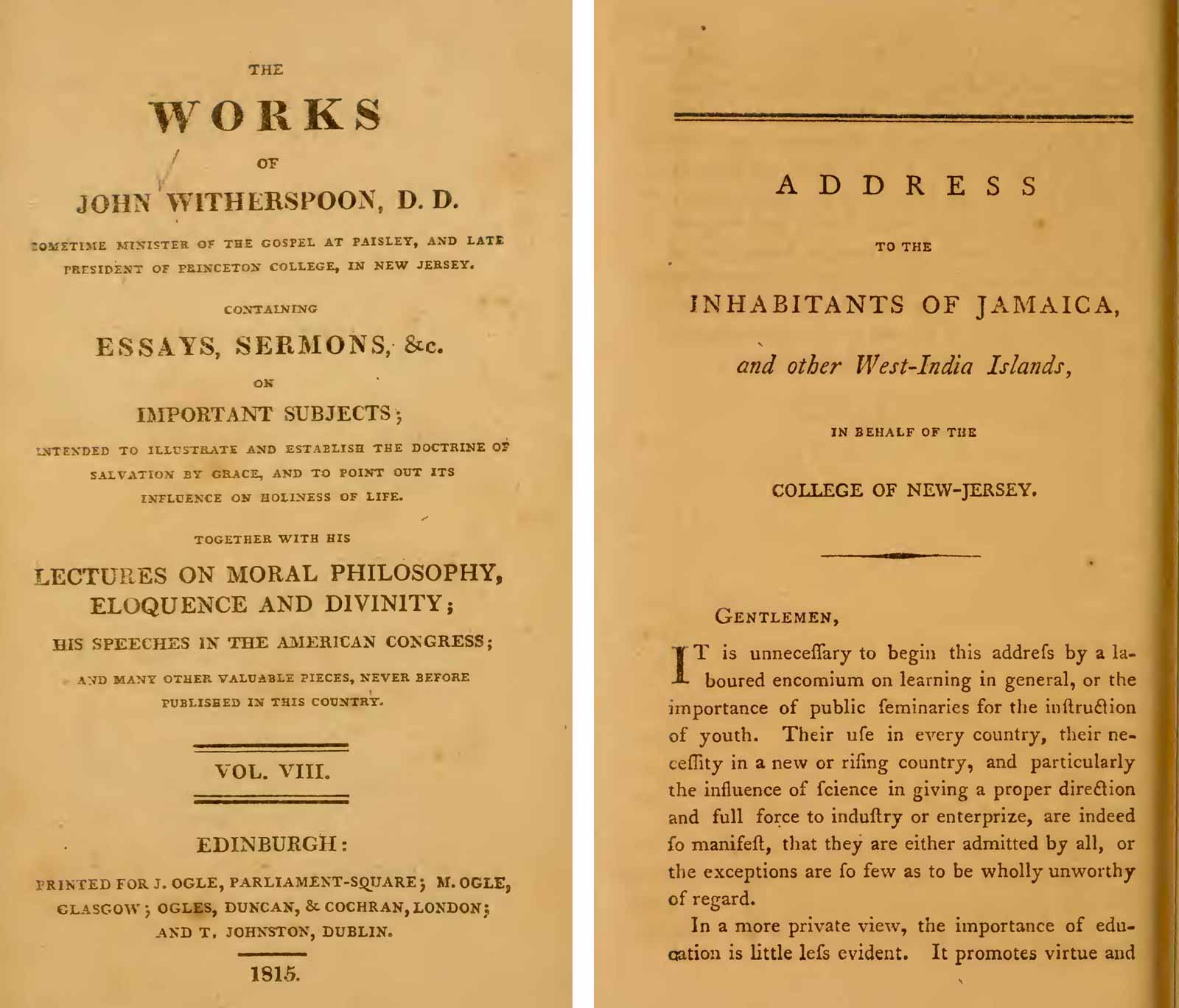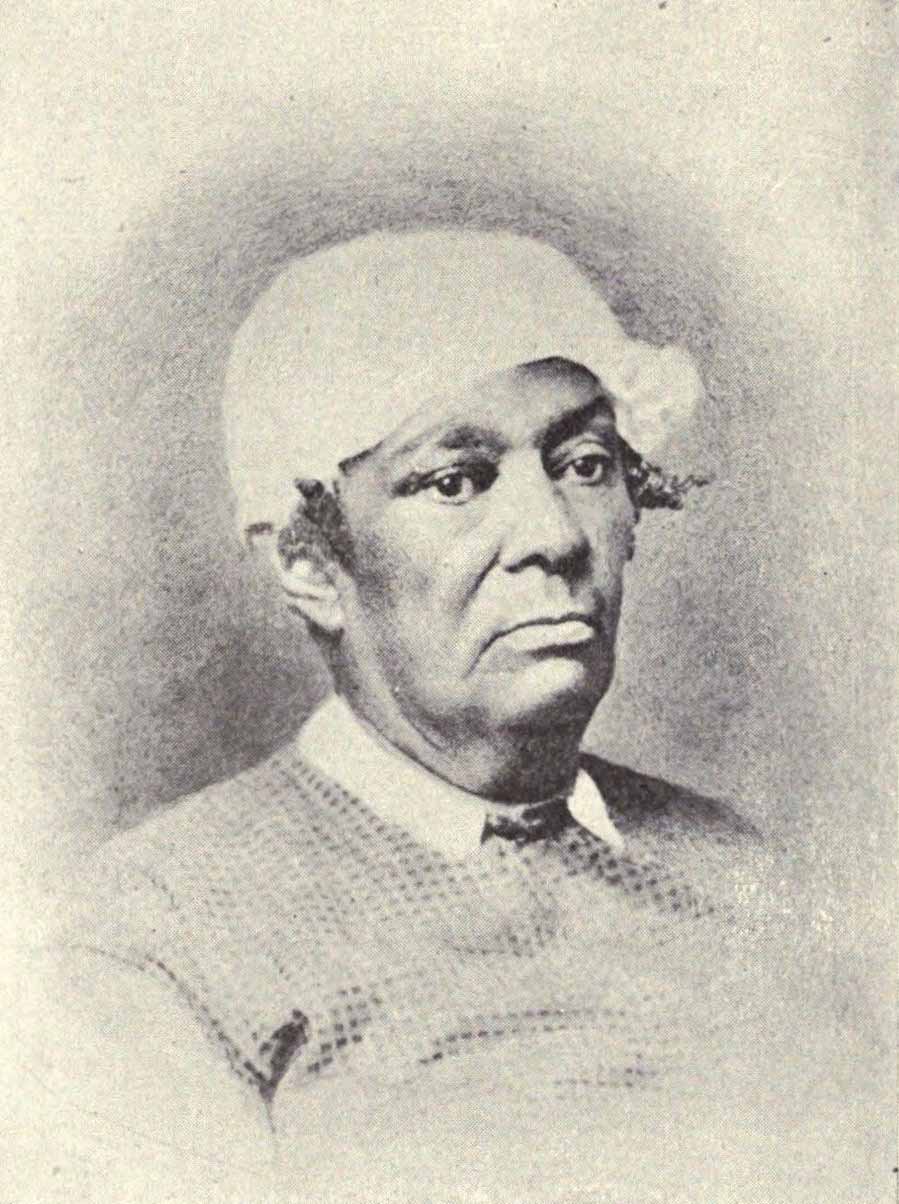According to the surviving records, the first enslaved African in Massachusetts was the property of the schoolmaster of Harvard. Yale funded its first graduate-level courses and its first scholarship with the rents from a small slave plantation it owned in Rhode Island (the estate, in a stroke of historical irony, was named Whitehall). The scholarship’s first recipient went on to found Dartmouth, and a later grantee co-founded the College of New Jersey, known today as Princeton. Georgetown’s founders, prohibited by the rules of their faith from charging students tuition, planned to underwrite school operations in large part with slave sales and plantation profits, to which there was apparently no ecclesiastical objection. Columbia, when it was still King’s College, subsidized slave traders with below-market loans. Before she gained fame as a preacher and abolitionist, Sojourner Truth was owned by the family of Rutgers’s first president.
From their very beginnings, the American university and American slavery have been intertwined, but only recently are we beginning to understand how deeply. In part, this can be attributed to an expansion of political will. Barely two decades ago, questions raised by a group of scholars and activists about Brown University’s historic connection to slavery were met with what its then-president, Ruth Simmons, saw as insufficient answers, and so she appointed the first major university investigation. Not long before that, one of the earliest scholars to independently look into his university’s ties to slavery, a law professor at the University of Alabama, began digging through the archives in part to dispel a local myth, he wrote, that “blacks were not present on the campus” before 1963, when “Vivian Malone and James Hood enrolled with the help of Nicholas Katzenbach and the National Guard.” He found, instead, that they preceded its earliest students, and one of the university’s first acts was the purchase of an enslaved man named Ben. In Virginia, a small consortium founded three years ago to share findings and methods has expanded to include nearly three dozen colleges and universities across North America and two in European port cities. Almost all of these projects trace their origins to protests or undergraduate classes, where a generation of students, faculty, archivists, activists, and librarians created forums for articulating their questions, and for finding one another.
But their progress is also due to a leap of historical imagination. When an archivist at St. Mary’s College of Maryland found incomplete records and few leads for his own research among collected letters and decades of minutes from the college’s board meetings, he wondered if he’d arrived at a dead end. He asked Georgetown alumnus Richard Cellini how Cellini had been able not only to identify the 272 men, women, and children that Georgetown University sold in 1838, but also to locate some of their living descendants. Cellini responded that he had looked outside the traditional corridors of history.
Most African Americans didn’t appear by name in the federal census until after the Civil War (though the “slave schedules” of 1850 and 1860 listed enslaved people under the entries for their owners, along with a few descriptive details), and plantation records often listed slaves by first name only. Journals and letters are rare; in many places, it was illegal to teach enslaved people to read or write. “Believe me, for decades and decades people at Georgetown believed that the slaves didn’t have surnames,” Cellini told the St. Mary’s archivist, and others insisted there had been no surviving descendants of the sale. More or less, Cellini concluded:
It’s because they didn’t look hard enough. Basically all they did was look inside the four walls of their own institution. There are actually multiple directions they could have gone: tax documents, sacramental records in churches, mortgage records, the Freedmen’s Bureau or, in our case, a ship manifest, and suddenly everybody’s last name appears.… It’s not that you can’t reach the conclusion that there is no documentation. It just takes a lot of hard work.
Once Cellini had the names, he hired a team of genealogists. Other projects have worked with community groups, oral histories, family stories passed from one generation to the next, clippings that had been tucked away in boxes and attics. And then there are the historians.
Archives have gaps, and methods of interpreting them can be flawed. Other evidence is sometimes hiding in plain sight. In 2012, at the University of Virginia, which had rented enslaved laborers both to construct the first buildings and to make their bricks, archeologists found—or, more precisely, refound—what is most likely a slave cemetery on campus, beneath what had been a plant nursery and two feet of topsoil. They left the graves undisturbed, put up protective fencing, and marked the grounds with explanatory panels. Other universities have tried to run from the past: when the University of Georgia made a similar discovery three years later, it tested and initially reburied the remains behind locked gates without announcement. The sole local witness, a retired alumnus named Fred O. Smith Sr., thought he might be watching the reinterment of his ancestors. The university’s treatment of the site had already become the source of a local controversy, and Smith arrived to watch the reburial after hearing from a local tipster that a new hole had been dug. He later told a reporter that when he was spotted, one of the workers moved a truck to block his view. “We may never arrive at the truth,” James Campbell, the chair of the Brown University investigation, noted at a conference shortly after the publication of its findings. “But we can at least ‘narrow the range of permissible lies.’”
The Brown report, published in 2006, found extensive connections between that university and the slave trade. According to historian Craig Steven Wilder’s Ebony and Ivy (2013)—a book, Wilder writes, that he had considered giving up on before reading the Brown study—“the high point of the African slave trade also marked, not coincidentally, the period in which higher education in the colonies expanded most rapidly.” In the middle decades of the eighteenth century, the number of colleges in Britain’s mainland colonies tripled as owners and captains of slave ships converted their profits into patronage and positions as trustees. A college’s survival could depend on its access to the economy of slavery and ability to attract what has been politely called “merchant wealth.” Before the colonies’ independence, it was this wealth that allowed the establishment and development of early colleges free from British meddling; after, northern schools’ efforts to fill their classes with the sons of Southern plantation owners allowed large swaths of the region to put off establishing new local universities.
Universities are hardly the only American institutions to have grown from ties to slavery, but with this research they are among the first to acknowledge that their involvement was rarely recognized and poorly understood, and to mobilize the expertise and resources to change that. (The writer Ta-Nehisi Coates, speaking to Harvard’s president as the university publicized its own research about slavery last year, said that universities “have a knowledge that maybe the Chicago Police Department does not have yet.”) “What is the point of these kinds of enterprises?” Campbell, the Brown committee chair, now teaching at Stanford, has said to other historians hoping to expand this work. “I think none of us here is naive enough to believe that somehow with the act of a few universities uncovering the ways in which their histories are profoundly entangled with the institution of slavery and the transatlantic slave trade… the scales are going to fall from the eyes of our nation, and racism as we know it will come to an end.” He continued: “But what we can do is we can transform the way people talk about and understand the past, what they see when they look out on the landscape in which they live.” The gaps in our knowledge about the experience of American slavery are volumes and volumes wide. These projects have narrowed them, and will continue to do so, but they’ve also revealed how much has been lost, suppressed, or considered unworthy of preservation in the official record. Beyond the institutional histories they uncover, these projects reveal a kind of segregation of our national memory or, at the very least, a willful amnesia.
*
Last fall, after more than four years of research, Princeton became the latest university to present its results. Princeton was the site of a George Washington victory over British forces and housed the Continental Congress. All of the university’s founding trustees, and its first nine presidents, owned slaves. Slaves owned by the university’s fifth president—two women, a man, and three children—were auctioned off under the so-called “liberty trees” outside his house, two sycamores planted around the time of the repeal of the Stamp Act and pointed out on campus tours through this year only as evidence of the college’s devotion to the American Revolution. (Princeton is one of the rare American institutions older than its country. The university was on its sixth president by the time the ink dried on the US Constitution.) According to Martha Sandweiss, the historian who led the project, Princeton epitomizes “the paradox at the heart of American history: from the very start, liberty and slavery were intimately intertwined.”
Advertisement
Slavery was not uncommon in New Jersey, and even once abolition began, it took generations to complete. An 1804 law granted emancipation only to New Jersey slaves born after July 4 of that year, and only after they had served what one historian has called a “term” of slavery that could last for as many as twenty-five years. One result of this gradual abolition was that many New Jersey slaveholders sold enslaved children born after that deadline to plantations out of state, which reduced the number of enslaved people in New Jersey without emancipating anyone. Another was the transition to institutions that closely resembled slavery: towns throughout the state established “poorhouse farms,” where the vagrant or indigent would be confined to work or were sometimes rented out. Businessmen traveling from New Brunswick to New York at the turn of the nineteenth century—a trip that could take the better part of three days, generally by carriage and boat—would come across “stray negroes” who could be jailed, then sold to pay jail expenses, if they failed to explain themselves sufficiently. The last child registered for gradual emancipation—a girl named Hannah, born in 1844, before legislators replaced the category with something called “apprentices for life”—remained enslaved until barely two weeks before the Confederacy’s 1865 surrender. Princeton’s entanglement with slavery, Sandweiss said when describing the project’s findings last fall, is “typical of other eighteenth-century institutions. And it makes us quintessentially and deeply American.”
At its best, this wave of research demonstrates the ways in which slavery and its legacies have built the world we live in: how the ideas and institutions born in one era do not entirely cast off the forces that shaped them as they move through time. There is no evidence that Princeton University itself owned slaves, but by the early nineteenth century its main building, Nassau Hall, was adjacent to a private farm where enslaved people tended to cattle and worked in a cherry orchard; on the other side of the building, slaves worked in the taverns and other businesses on Nassau Street. Before they could enroll in courses, prospective students had to pass exams in Latin and Greek administered personally by the president; Sandweiss speculates that students arriving for their exams early on their first morning would be greeted at the president’s doorstep by “an enslaved person—the first person on campus a prospective student might meet.” As the college began to chase planter wealth, its antebellum student body grew disproportionately Southern and repeatedly clashed with Princeton’s community of free African Americans. The school’s Civil War memorial is one of the very few in the country to list the names of the war dead without noting on which side they fought—Sandweiss knew of only one other, at a boarding school—and the university began to grow to its modern size through gifts from a family fortune made by providing financial and shipping services to Cuban slave plantations until at least 1866, the year after slavery’s abolition in the United States.
Yet one of the most powerful things about Princeton’s project is its recognition of where history can fall short. Sandweiss, like her colleagues at a handful of other schools, has called on other methods and genres in the service of a broader aim. Princeton reached out to the community’s schools and libraries (“Students in Princeton’s high schools will learn that there was slavery in New Jersey,” Sandweiss says), and commissioned works from artists and filmmakers. The painter and sculptor Titus Kaphar installed a piece at the site of the slave sale, facing the sycamores in the middle of Princeton’s campus, with a brief explanation of the auction for whoever walks by—an intervention in the stories Princeton tells about itself. McCarter Theatre in Princeton commissioned seven playwrights to write short plays based on documents and findings from the archives, working with archivists and historians to extrapolate details of enslaved people’s lives from what records do exist. “Historians can exercise a certain kind of imagination, but there are leaps we cannot make and be responsible to the rules of our profession,” Sandweiss says. “We cannot imagine what a nine-year-old boy thinks as he and his family are going to be put up for sale. But artists might.”
Emily Mann’s “Under the Liberty Trees” dramatizes the slave sale directly. Branden Jacobs-Jenkins’s “Travel” draws on the lives of Betsey Stockton, a woman once owned by a Princeton president who became a missionary in Hawaii and then a teacher in Princeton’s sole public school for black children, and Cezar Trent, a free black Princeton slaveowner. The play imagines a fictional meeting between Stockton, Trent, and a lightly fictionalized Jacobs-Jenkins, who also lived in Princeton, as an undergraduate. Two other plays, by Regina Taylor and Jackie Sibblies Drury, examine the life of James Johnson, a former fugitive slave who, after a Princeton student recognized him on campus and alerted his former owners in Maryland, worked as a street vendor and campus handyman in part to repay the local woman who had purchased his freedom.
The tools of history may also be ill-suited to express the emotional force of what they uncover. More than one historian working on these projects spoke of moments when some aspect of their work unexpectedly moved them to tears. For James Campbell, it was an eighteenth-century campus abolitionist’s plea for future generations to look more closely at “this barbarous traffic,” and at the racial subjugation underpinning it, pulled off an archive shelf on a night when Campbell was trying to answer his own questions about how best to do just that. “Somebody had left a message in a bottle,” he said, sent across a sea of two hundred years. For Adam Rothman, a historian at Georgetown and a member of that university’s working group on slavery, memory, and reconciliation, it came not during his research, but when he began to push the group’s findings out into the world. In a library special collections room last spring, Rothman presented some of the baptismal records, letters, and bills of sale from the papers of the Jesuit priests who established Georgetown and its plantations. “I gave a pretty conventional academic talk to a fairly conventional academic crowd,” Rothman recounted at a conference this year. “There was a gentleman standing in the back of the room who didn’t quite fit in the mold.” He went on:
He was wearing a kind of track suit, tattoos all over his body—arms and neck. He raised his hand, and he just started talking. And he started to say that the names that he was reading on the bill of sale were names that he recognized. Names from his ancestors. And he was just breaking down, crying, talking about how—he was Catholic—how those priests, who were supposed to be shepherds of their flock, could sell those people. How they could send them to the wolves. He was having a crisis of faith, right there. He asked me, How could this happen? And what are we going to do about it? I had no answer for him.
The man’s name is Joe Brown. He had been traveling to historical societies and churches for nine years, after a difficult time sent him looking for what he calls “some strength from my ancestors.” He had visited Georgetown that day to look through one of the library’s archives and happened to pass by the special collections room after Rothman began his presentation. “I asked an attendant that was there if I was allowed to go in,” Brown says. Once he entered the room and began to listen, “I realized that Adam was talking about my family.” After a DNA test, Brown found a group of relatives living in Louisiana, where Georgetown infamously sold 272 slaves in 1838.
Encounters like this might be the most powerful result of this work—as well as the lasting networks of scholars, activists, artists, students, neighbors, descendants, and community members coalescing around them, as projects first begun in isolation have built upon one another. Their strength lies not just in a profound sense of connection with the past but, through the past, a collective grappling with the present. None of the investigations into universities’ complicity with slavery set out exactly to resolve the moral issues their discoveries would raise, but as they find their audiences, they create what one historian described as “the constituencies for different kinds of conversations.” The work of history does not always overlap cleanly with the work of politics, and the archives alone may not yield what seem like the most urgent answers. But they help sharpen the questions.
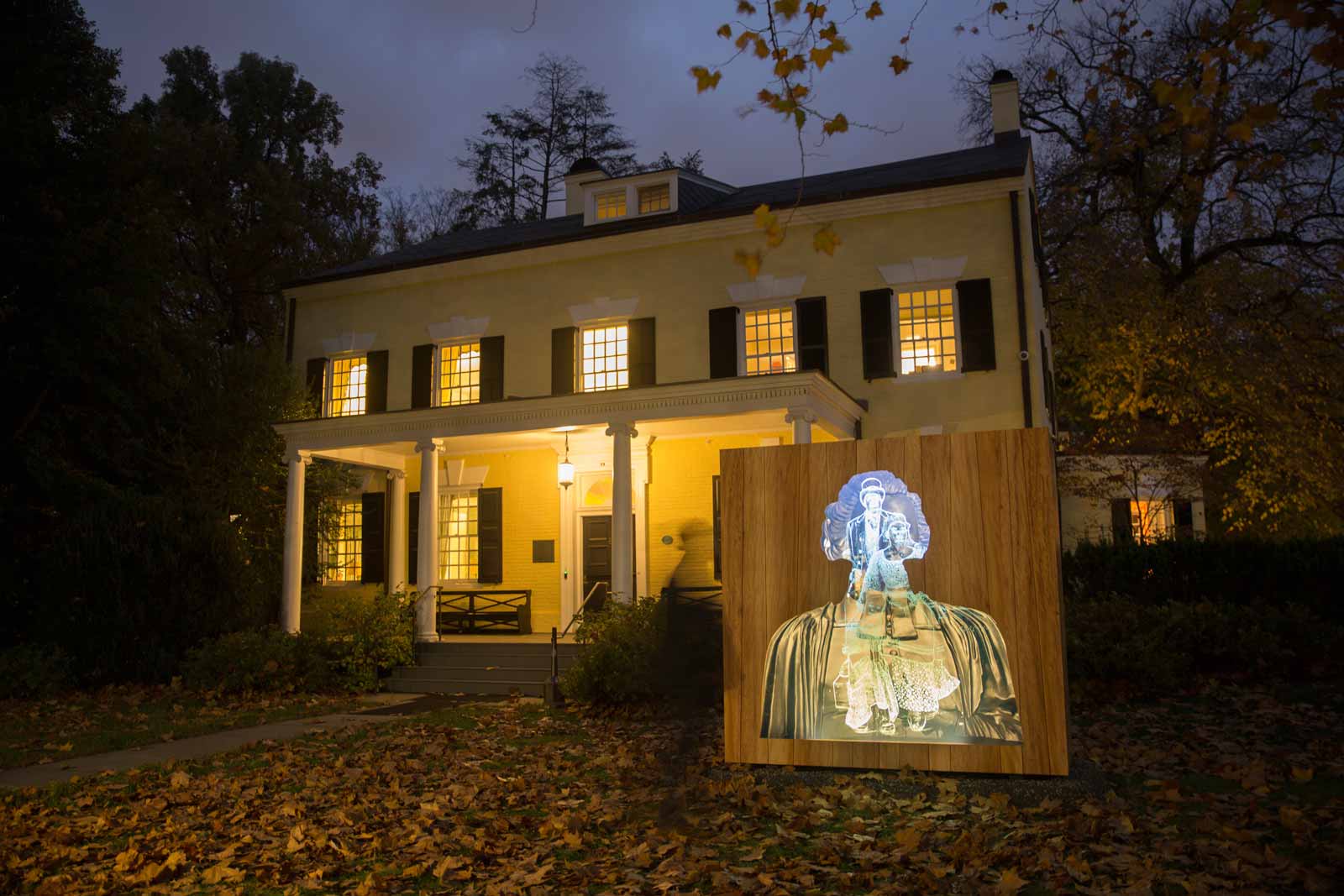
Titus Kaphar/Jack Shainman Gallery, New York/Princeton University Art Museum
Titus Kaphar’s art installation, Impressions of Liberty, which addresses the 1766 sale of six enslaved people belonging to Princeton president Samuel Finley, outside the Maclean House where the sale took place, Princeton, 2017; click to enlarge

